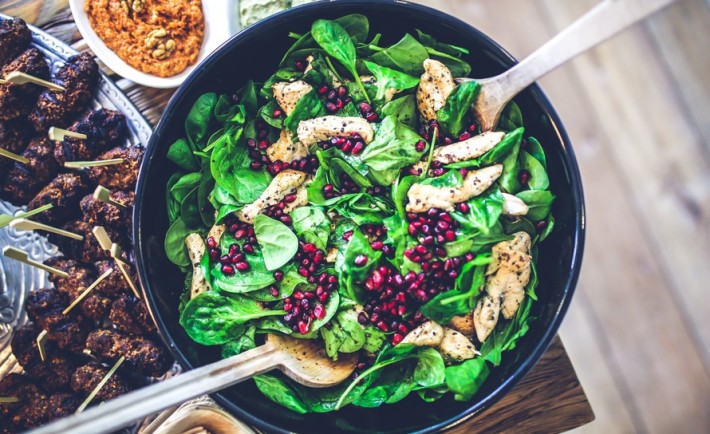Logging onto any social media platform, it is quick common to find photos posted of meals using avocados, strawberries, or watermelon; and while that is all well and good in the spring and summer months, seeing these photos posted in November, December, and January should mark as a red flag for those attempting to rid themselves of unhealthy foods.
In order to fully integrate a healthy diet into your day-to-day lifestyle, one must understand how and why it is optimal to eat with the seasons.
The fact of the matter is, in order for us to consume, for example, a ripe blackberry in the dead of winter in the Pacific Northwest, that blackberry (along with avocados, bananas, kiwi, and tomatoes, among others), has likely been injected, gassed or otherwise treated with chemicals; and correct me if I’m wrong, but chemicals and preservatives are far from healthy.
Blackberries are in season in this fine area of the world in the late summer, as are most sweet, juicy fruits. When purchasing blackberries outside of those months, they are most likely being shipped from the warmer climates in the US or Mexico. When fruits and vegetables are shipped, they are must be in tiptop ripeness upon arrival. This generally means they must be harvested under-ripe, and ripened in transit or upon arrival using chemical ripening agents. Consuming the ripening agents used in today’s marketplace (ethylene gas, calcium carbide and ethephon), is less than ideal if one is attempting to eat healthy and “clean”.
Aside from limiting our consumption of chemical additives, there are many other benefits from eating what’s in season.

{ Heirloom Tomatoes from Trout Lake Farmers Market }
Cost: Cost is definitely a factor. Local, in-season produce is typically less expensive based on the relative abundance of the crop and the minimization of transportation costs. Let’s take basil, for example. Throughout the year, packages of basil can be found in a supermarket for about $3 per half ounce. In contrast, when attending a farmers market in the middle of summer, those brilliant, vibrant green, crisp, enormous bunches of basil run for as little as a $1.
The same concept applies to seafood. Fishing season for halibut on the West Coast is mid-March to mid-November. Purchasing halibut outside of those months would cost you an arm and a leg. Purchasing in season is much more affordable, with the added option of buying straight from the source down at your local fishermen’s wharf. It’s basic supply and demand; purchasing what’s growing and available now will absolutely reap financial rewards.
Taste: For some this may not be huge factor. As long as food fills the belly and has a decent flavour, the quality of the flavour doesn’t really have too much importance. However, for those with a more discerning palate, when produce is grown in a hothouse or picked under ripe and shipped from other parts of the world, there is no denying that flavour is affected immensely. Consider a bright red, vine-ripened, juicy summer tomato, warm from the sun and smelling of soil and foliage. Now consider a pale pink, waxy winter hothouse tomato. The vibrant, sweet, earthy flavour is completely lost in the hothouse tomato. Not only are you missing out on the vitamins and minerals imparted from the natural ripening process, but you’re missing that quintessential flavour and character of the produce.
Variety: Variety is another big perk to eating in season. Many people are shocked and delighted to find that a wide variety of delicious and little known crops are harvested in the fall and winter months. Multiple varieties of squash, apples, endives, garlic, grapes, figs and mushrooms find their way to our bellies from September to November, and produce such as citrus, kale, radishes, turnips, and leeks burst out of their hiding places for the December, January, and February timeframe. Spring and summer aren’t the only seasons to take advantage of fresh produce. A mixture and variety of these fruits and vegetables is the perfect way to keep a balanced diet. Perhaps most exciting, is at the intersection of the seasons when you get things like a Kale and Apple Smoothie, or an Orange and Fig Tart.
Energy: Above all, foods that come out each season are designed to support our bodies. Lighter, high-energy fruits and vegetables sneak their way into our diet in the summertime to support our ability to seek the outdoor adventures. In the winter, vitamin D rich foods and protein are in abundance, providing a natural supplement at a time when the sun is shy, and forestalling the seasonal depression that is so prevalent in this part of the world. There is a reason these crops grow when they do.

{ A local Farmers’ Market at Persephone Brewing Company }
Farmers markets and smaller local produce stores are a great place to start learning about eating with the season. If you are a bit more of an advanced cook, there are quite a few online publications to satisfy your knowledge of in season produce. Knowing this in advance may help plan a dinner party menu in accordance to what is local and fresh, and at its peak flavour. But be careful, your guests will be licking their plates and chomping at the bit to get a repeat invite.
Here is a little overview of not only the fruits and vegetables seen through the Pacific Northwest during spring and summer, but also fish and seafood.
Spring (March – June) * Asparagus * Kale * Peppers * Radishes * Rhubarb * Salad Greens * Spinach * Turnips * Clams * Cod * Crab * Flounder * Mussels * Oysters * Sablefish * Scallops * Shrimp
Summer (June – September) * Artichokes * Beans * Beets * Broccoli * Carrots * Cauliflower * Celery * Swiss Chard * Corn * Cucumbers * Fennel * Garlic * Shallots * Summer Squash * Tomatoes * Zucchini * Apricots * Blackberries * Blueberries * Cherries * Currants * Gooseberries * Melons * Nectarines * Peaches * Plums * Raspberries * Saskatoon Berries * Strawberries * Halibut * Spot Prawns * Chinook, King, Spring Salmon * Coho Salmon * Sockeye Salmon * Albacore Tuna
*General guide only – availability can change due to weather. Reference: Farm Folk City Folk, www.farmfolkcityfolk.ca, 2012
The way the population consumes food on a regular basis has altered leaps and bounds over the years. The invention of the Internet and social media has enhanced awareness of what is healthy, and what is not. With this movement in attempting to cut out fast and processed food, and knowing what goes into your meals; why not go a step further to integrate a seasonal diet. Your tastes buds, bank account, and, ultimately your body will thank you for it.
This article was previously published in Bon Vivant, The Sutton Place Hotels In-Room Magazine. It was republished with permission of the author Ally Taylor, local blogger of All in Moderation.
Photo (via)
Join the Public Relations Academy to take your creative ideas and put them into a systematic plan to help you deliver the content you need to succeed. You can also work with Talia one-on-one through monthly strategy calls.
Visit www.TaliaDavis.com to take the FREE 5 Day Perfectly Planned Publicity Challenge.







